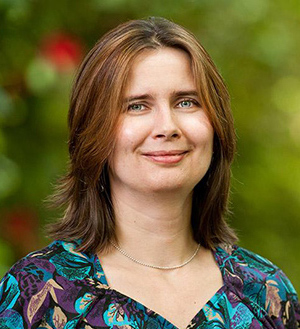The full story is at:
But the title says most of it.
Henri Jansen will receive the University-wide Dar Reese Excellence in Advising Award and KC Walsh will receive the
OSU Faculty Teaching Excellence Award. at a ceremony in September.
!!!!!!!!

The full story is at:
But the title says most of it.
Henri Jansen will receive the University-wide Dar Reese Excellence in Advising Award and KC Walsh will receive the
OSU Faculty Teaching Excellence Award. at a ceremony in September.
!!!!!!!!

Oksana Ostroverkhova has been chosen by the American Physical Society as their Woman Physicist of the Month for May 2017. The Woman Physicist of the Month is a program of the APS’s Committee on the Status of Women in Physics (CSWP). It highlights exceptional female physicists, recognizing their positive impact other individuals’ lives and careers.
https://www.aps.org/programs/women/scholarships/month/index.cfm
Randy Milstein spoke at the Eugene Register Guard on June 6.
The article from the newspaper, as well as a five minute video on how to safely view the eclipse, is available here.
Physics graduate student Carly Fengel shows a Timber Ridge Elementary School student the beautiful spectral lines of hydrogen, helium, argon and neon lamps. When viewed through diffraction grating glasses, the various wavelengths of light are split apart, revealing a unique signature for each gas. “So we could tell what stars are made of!” remarked the student.
Family Science Nights have been a yearly staple in Corvallis schools for more than a decade, but May 16 was only the second one for Timber Ridge School, a combined middle and elementary school serving a rural area on the northern edge of Albany. About 200 students of all ages attended the event, with middle-school students acting as guides and selling snacks as a fundraiser.
In addition to volunteers from the physics department, OSU was represented by other departments, including the College of Veterinary Medicine, the College of Earth, Ocean, and Atmospheric Sciences, and the School of Nuclear Science and Engineering. Non-departmental groups also showed up, such as the Dairy Club, Geology Club, and Fisheries and Wildlife Club. For the first time, nursing students from Linn-Benton Community College made an appearance, rounding out the science offerings with tables focusing on exercise, vital signs, CPR, and hand-washing.
Other physics demos included classics like levitating ping-pong balls with a hair dryer and the ever-popular hovercraft. As usual, the line for the hovercraft rarely dropped below a dozen students, continuing to draw a crowd to the end of the hall throughout the evening. Many were eager to learn how the hovercraft worked and several times kids remarked: “I want to make one!”
As the last Family Science Night of the school year, this event ended the semester on a high note, with several new groups and a new physics demonstration. Both volunteers and families will be looking forward to next year’s school outreach events.
A big thank you to the physics student volunteers Evan Peters, Garrett Jepson, and Carly Fengel.
Story by Monica Bennett.
Physics students and faculty have received a total of 7 SURE Science Awards.
The SURE Science Awards support an undergraduate student for a summer of research in a faculty member’s lab.
our student and faculty awardees are:
Cassandra Hatcher (Physics) in the Lazzati Group
Garret Jepson (Physics) in the Schneider Group
Michelle Zhou (Physics) in the Johns Lab (Vet-Med)
Youngmin Park (BB) in the Qiu Lab
Theresa Dinh (Biology) in the Sun Lab
Dublin Nichols (Physics) in the Minot Lab
Attila Varga (Physics) in the Hadley Group
Congratulations to all – we’re looking forward to hearing your reports at the end of the summer.
 SPIE – the international society for optics and photonics has chosen Matt Graham as one of 10 Rising Researchers for 2017. He will be honored at their meeting in Anaheim next week!
SPIE – the international society for optics and photonics has chosen Matt Graham as one of 10 Rising Researchers for 2017. He will be honored at their meeting in Anaheim next week!
https://spie.org/conferences-and-exhibitions/defense–commercial-sensing/rising-researchers has the story.
(Graham group member Hiral Patel received the poster award at SPIE last year. Go Micro-Femto group!)
A paper just published in Nature Communications by the Single-Molecule Biophysics Laboratory of Assistant Professor Weihong Qiu reports an unexpected mechanical property of a “motor” protein that offers new insights into how motor proteins help build and maintain the mitotic spindle, the American football-shaped macromolecular structures that animal and fungi cells depend on to ensure accurate chromosome segregation during cell division. Located inside cells, motor proteins are tiny molecular machines that convert chemical energy into mechanical work. They interact with train-track-like structures called microtubules to transport cargos or exert forces.
[continued below]

Math (and Physics) Professor Tevian Dray has been awarded the MAA University Teaching award.
2017 Deborah and Franklin Tepper Haimo Award for Distinguished College or University Teaching of Mathematics from the Mathematical Association of America (MAA), in recognition of his exemplary mathematics teaching and his positive influence on college mathematics curriculum development and teacher training on a regional and national level.
See the IMPACT article below!
Math professor receives national award for teaching excellence